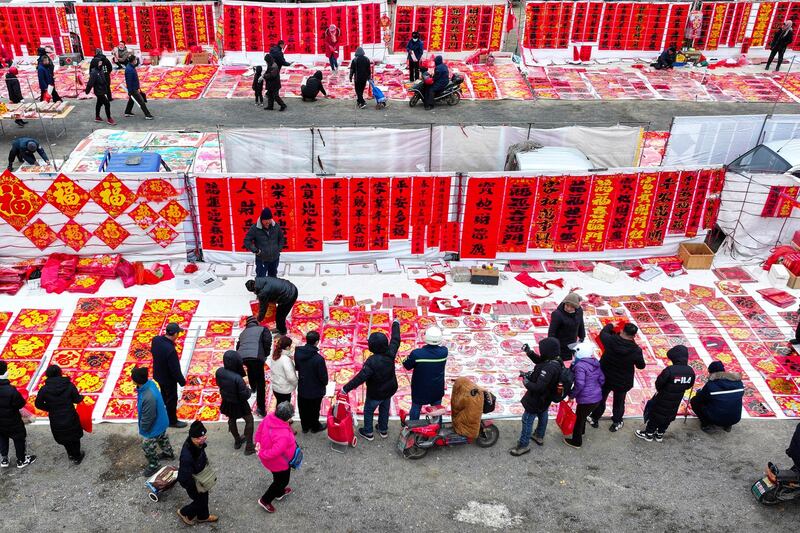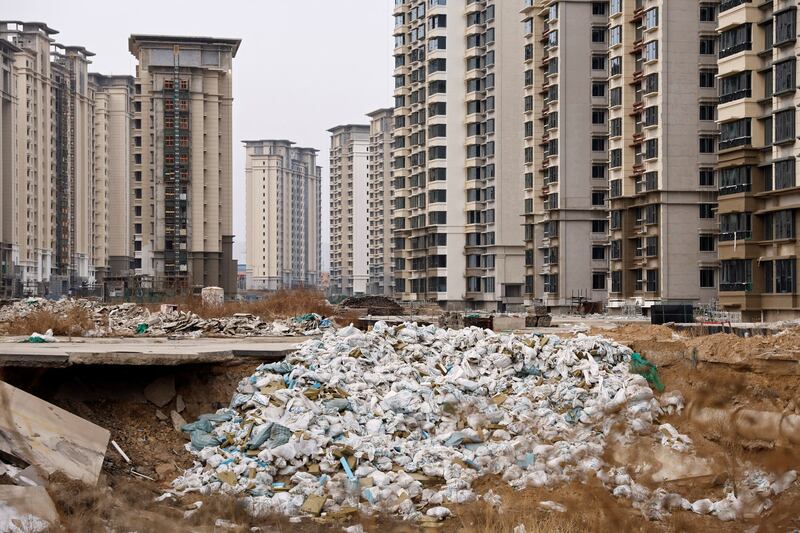China’s economy improved in the first two months of the year buoyed by a 7% rise in industrial output despite the ongoing decline in the beleaguered real estate industry, a major economic driver.
The two-month increase in industrial output from enterprises above designated size was also a 0.2 percentage point increase from December, according to data from the National Bureau of Statistics (NBS) on Monday.
A 5% jump in retail sales – a gauge of consumption – also boosted growth in the world’s second-largest economy which is facing its slowest economic growth since 1990 and hamstrung by structural problems such as the property sector.
“China’s activity data broadly stabilized at the start of the year. But there are still reasons to think some of the strength could be one-off,” said Louise Loo, a China economist at Oxford Economics in a note on Monday.
“Consumers were buoyed temporarily by festivities-related spending at the start of the year. In the absence of decisive consumption-related stimulus this year, we think it would be difficult to sustain a robust consumer spending pace this year,” Loo wrote.
Still, the numbers surpassed market expectations, according to a Reuters poll of economists, which forecast a 5% increase.

The state’s investment push would also have boosted overall growth. Fixed asset investments, including those in infrastructure projects, expanded 4.2% to 5.08 trillion yuan (US$706 billion) in January and February from the year-earlier period. Investments in real estate continued to be a drag as, minus property investments, the increase was 8.9%.
On the other hand, investments in property slid 9%, underlined by a 20.5% drop in the amount of newly built floor area compared with the first two months of 2023. In tandem, sales of new homes plunged 29.3% to 1.05 trillion yuan ($145.9 billion).

Still, Liu conceded that the worst is over.
She said industries and companies continue to suffer operational pressure due to rising costs and insufficient orders.
But she was quick to add that a “new leap forward” to modernize the industrial system and accelerate the development across sectors like electric vehicles, hydrogen power, new materials, life sciences and commercial spaceflight would revive growth.
It is also part of the domestic consumption drive under Chinese President Xi Jinping’s latest mantra to unleash “new productive forces,” to buffer the structural challenges hammering economic prospects clouded by not just the real estate market crisis but also local government indebtedness and economic issues due to demographic shifts.
The consumption campaign urges industries to upgrade their equipment and citizens to trade in their old vehicles and home appliances for new ones. Granted, investments in the manufacturing sector rose 11.9%.
Policy-makers project that an over 5 trillion yuan ($694 billion) market could be created annually as industries and companies upgrade their equipment to raise development quality. A similar billion-dollar trade-in market is also expected when consumers replace old vehicles and home appliances.
“From a demand perspective, the consumer market continues to recover and the potential consumption for product upgrade to unleash,” said Liu Aihua, NBS spokesperson.
To support the domestic demand policy, Beijing will issue 1 trillion yuan of special long-term bonds this year, and more in the next few years.
Externally, China continues to face a complex and difficult global trade environment, even though exports edged up 10.3% in the first two months of this year, compared with the previous year.
Edited by Mike Firn and Taejun Kang.
